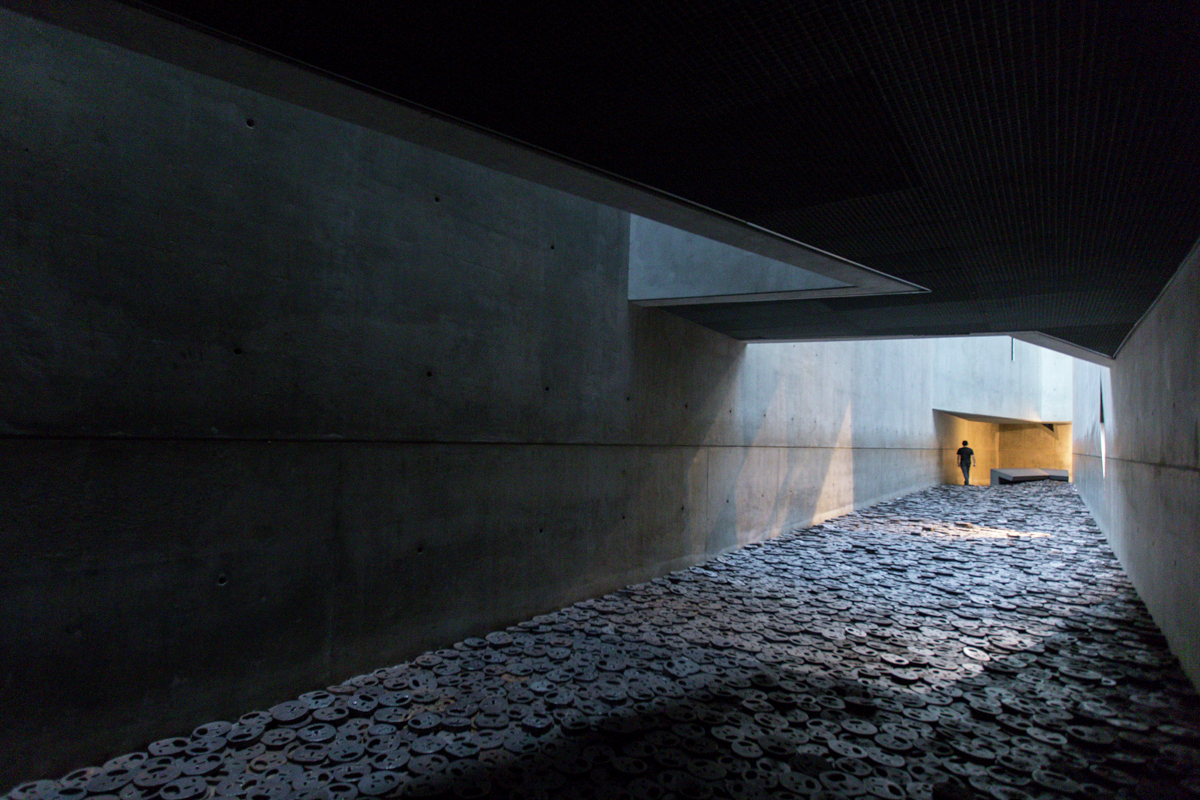Designing the Senses: How Does Synesthesia Shape Our Built World?
The Jewish Museum in Berlin, designed by Daniel Libeskind, employs synesthesia to evoke feelings of disorientation, loss, and memory through fragmented geometry, contrasting lighting, and material choices. Inspired by a shattered Star of David, the building guides visitors through slanted and narrow corridors, creating instability and discomfort. Light, either filtered through slits or almost entirely absent in certain areas, reinforces the oppressive atmosphere. The raw concrete, with its cold and rigid texture, intensifies this experience, while the void resonates with echoes and silence. In the Shalekhet (Fallen Leaves) space, metal plates shaped like faces emit unsettling sounds when stepped on, creating a disturbing auditory experience. The museum transcends its function as an exhibition space and becomes an immersive architectural experience, where light, sound, texture, and form combine to convey the pain and memory of the Holocaust.
This project exemplifies how architecture can go beyond vision, engaging multiple senses to create impactful experiences. This approach is directly related to the concept of synesthesia in architecture, which occurs when stimuli from one sense trigger perceptions in another. For instance, a texture may evoke a thermal sensation, or a material may suggest a specific sound. In this way, the architectural experience is not only seen but also felt, heard, and subjectively interpreted through the interaction of the senses. Architect and theorist Juhani Pallasmaa, in his book The Eyes of the Skin, emphasizes that architecture should engage all senses, not just vision. According to him, the dominance of sight in modern architectural experience overlooks the sensory richness that materials can offer. Touch, hearing, and even smell play a crucial role in creating a truly immersive and memorable space.


 Picture: Laurian Ghinitoiu
Picture: Laurian Ghinitoiu
Comments :